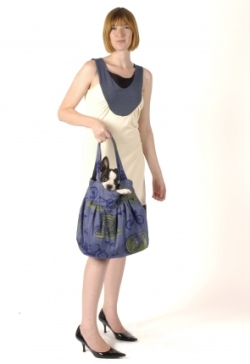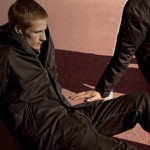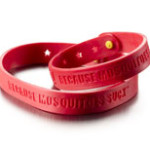 Since its inception in the autumn of 2005, Passenger Pigeon has become a green fashion favorite among women of all ages and financial means. Heather Schibli and Wendy Trass have created a company appreciated for its intelligent and passionate designs.
Since its inception in the autumn of 2005, Passenger Pigeon has become a green fashion favorite among women of all ages and financial means. Heather Schibli and Wendy Trass have created a company appreciated for its intelligent and passionate designs.
The Canadian media mavens at GreenLivingOnline.com have allowed me to share my interview with Heather and Wendy, which was first published on GLO a few weeks ago. Keep reading for all the juicy details about the past, present and future of Passenger Pigeon – and eco-fashion as a whole!
The label was previously named Calledyourbluff and was changed to Passenger Pigeon when the brand began using sustainable textiles. Why did the collection change to eco-fabrics? Do you find working with sustainable fibers to be more limiting when coming up with designs?
Wendy: Do we feel limited? Yes and no. In the past we’ve dyed fabric because it only came in beige, and the very reason we use prints so much is because much of the available fabric is quite basic. Working within these limitations means that we have to get pretty creative sometimes, but I think that’s where the charm of our line comes from.
There’s actually a good range of eco-friendly textiles, especially for more casual fabrics like knits and twill. The one thing that we would like to see more of is affordable organic wool and other heavier fabrics for winter. However, it seems every week we get new, exciting swatches from different suppliers. There seems to be a lot happening in the textile industry to develop beautiful, new, sustainable fabrics.
Heather: A common theme found in my art work while I studied for my BFA was that of solid waste and responsibility with material use. After graduation, and during the first year of selling clothing and accessories I had made to local stores, this theme kept resurfacing within my mind. So, in order to curb my sense of guilt for manufacturing goods that would inevitably end up in the landfill, I opted to use materials that had a lighter bearing on the environment during their production and manufacturing. In addition, once these materials do decompose, they will leach a lot less back into the environment than their non-organic heavily dyed counterparts. I love making clothes and other items and being green alleviates my guilt for doing so!
In many ways, working with sustainable fibers is more limiting, for there is much less to work with, and fewer colors to choose from. However, in some ways this makes it easier for me and Wendy, since our decision process is that much shorter. I only wish there were more eco-liners (lightweight fabrics to line clothing) as well as more affordable organic wools (and I so miss working with herringbone and hound’s tooth woven wools!!)
Do you find people often asking you about the plight of the passenger pigeon, your brands’ namesake and a now extinct species?
Wendy: A lot of people ask about where the name came from. I’m surprised the story isn’t better known, so we end up telling it often. I love the part about passenger pigeons being so plentiful that when they flew by people held up umbrellas as protection from their droppings. I still think it’s just the perfect name for our company. It works as a great reminder that some of our resources are finite and we have to preserve them.
Heather: I have been surprised to find out that very few people are aware of the Passenger Pigeon. Wendy and I often find ourselves educating people about this extinct species. The plight of the Passenger Pigeon is found on our website as well as in Wikipedia and other websites dedicated to this fine bird. [Editor’s note: The Smithsonian has an excellent web page devoted to the bird.]
You design, screen-print and sew everything in Toronto. Do you find it more expensive to keep your production local or is the cost similar to what you would pay to have the goods made elsewhere and then shipped back to you?
Wendy: We know other designers who have made the move offshore for production, and we can’t believe how cheap it can be done! Despite all the shipping involved, producing garments offshore is undoubtedly cheaper than producing them in Toronto. It means that our garments work out to be more expensive than mass produced clothing that you find in the malls. However, our prices are competitive with other locally made clothing lines. Although it is sometimes tempting to cut production costs so dramatically, supporting local economies is a major priority for us. For us it goes hand in hand that we avoid exploitation, both of the environment and laborers.
Heather: We have never considered sending our clothing off shore. We believe in supporting local industry, and we try to keep shipping to a minimum. However, we have compared notes with other local designers who do produce off shore, and their costs are lower.
Between the two of you, your college careers involved studying sociology, photography, print making, drawing and painting – how did the two of you team up to make an eco-fashion line?
Wendy: Heather and I met through friends a few years ago, as she was transitioning into an exclusively eco-friendly clothing line. I was really inspired by the direction she was taking. She had always talked about wanting a hand with pattern making and garment design and I had graduated from a course in just that. I guess we were both drawn to each other and it worked out that our different skills were so complimentary.
Heather: Wendy and I had a common friend who introduced us at a fashion show. I immediately knew I wanted Wendy to become my business partner, for she possessed strengths, talents and skills that complimented my own. It has been true delight working with Wendy, and the clothing line is so much stronger now that she is onboard!
Is Passenger Pigeon involved in any local or green-based charities, helping to give back to the community?
Heather: We donate to Greenpeace as well as WSPA. In the past, I used to volunteer with FLAP– a group that collects dead and injured song birds that have hit buildings during their bi-annual migration (I hope to help again this spring). We also donate our off-cuts and bolt ends to local schools, where they reuse the fabric to make paper or for other textile projects.
The wind turbine screen print from the Fall/Winter 2007 was really popular with a range of consumers and the Spring/Summer 2008 collection features awesome bicycle and plastic bags prints. Will we be seeing hybrid cars and corn stalks in 2009?
Wendy: Hmm, I don’t know about hybrid cars! Heather and I aren’t really into cars so much. Heather is the one to come up with the print designs, depending on what’s on her mind at the time. Last summer she was on a garbage theme. I was skeptical at first – piles of garbage didn’t seem like a good idea – but the prints turned out to be so lovely!
Heather: As much as I try to veer away from bird imagery, I tend to come back to it season after season. I have dabbled with alternative energy symbols as well as bicycles; however, my heart is with objects, creatures and shapes created in the natural world. I may just consider corn stalks in the future!
Passenger Pigeon’s fashion and accessories are made with organic cotton, hemp, tencel and lyocell. Do you intentionally avoid using bamboo because of the heavily chemical processes used to produce it or do you just find it to be too popular?
Wendy: We do actually use bamboo in our line. There’s this beautiful bamboo knit that we like to use for wrap dresses for our fall/winter collections. We also use soy a lot too. The lighter knits are great for summer. It’s true that bamboo is not a miracle fabric in regards to sustainability. However, we feel that it is better than many fabrics such as rayon or conventional cotton. No fabric is 100% ideal, so we try to make responsible choices given what is currently available.
Heather: We do use bamboo, and have received a very small amount of scrutiny from a couple concerned citizens. We have explained to them that, although processing bamboo does use some chemicals, this chemical use is much smaller than say, with cotton or petroleum products. Bamboo is a sustainable fiber, for it grows rapidly. It is a much better solution to conventional cotton.
What do you say to the folks that still believe global warming is just a myth?
Wendy: Wow, do people still believe that?! I think we don’t run into people like that so often. I feel like there is always a way to connect with people, even cynics, when the topic of the environment comes up. It’s really so much more than global warming. I don’t know of anyone who doesn’t agree that reducing waste and conserving resources is a good thing.
Heather: I can not believe some people still believe this to be a myth!!! Just ask the world’s top scientists and they will all say it has been a true trend for the past century!! (Since the industrial revolution).
Do you have any other nifty, secret projects in the works that you could hint at?
Wendy: Personally, I’m interested in doing more custom work for weddings — bridal gowns and bridesmaid dresses in sustainable fabrics. I got married last fall, so I did a lot of thinking about how to design a good eco-friendly wedding. For Passenger Pigeon, though, you’ll just have to stay tuned!
Heather: We do in fact have something up our sleeves! We will be sending out a surprise treat with each and every garment this spring. It is up to our consumers whether or not they will want to use this tool attached to their purchase.
[Image courtesy of Passenger Pigeon: Cream Helm Dress (Bamboo/Organic Cotton and Soy Knit) & Large Blue Granny Bag (Organic Cotton)]
[Written for and first published online by Green Living Online]


One Comment